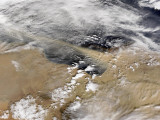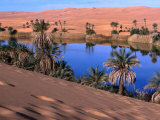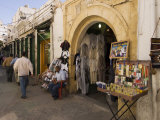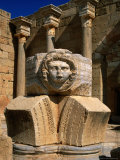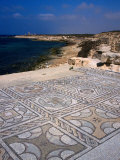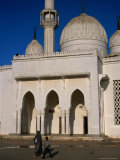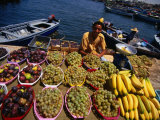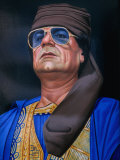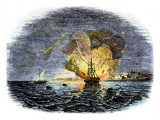|
|
|
|
|
|
|
|
|
|
|
|
BOOKS ABOUT AFRICA & LIBYA
|
|
|
|
|
|
|
|
|
|
|
|
|
|
|
|
|
|
|
|
|
|
|
|
|
|
|
|
|
|
|
 |
|
|
|
|
|
|
|
|
|
|
|
|
|
|
|
|
|
|
|
|
Libya Posters, Prints, Charts, & Maps
for social studies classrooms, homeschoolers and scholars.
|
geography > Africa > LIBYA < Middle East < social studies
|
Libya, the fourth largest country in Africa, and the 17th largest in the world, is on the northern Mediterranean Sea coast between Egypt to the east, Sudan on the southeast, Chad on the south, Niger on southwest, and Tunisia and Algeria on the west.
The word Libya is Greek from the Egyptian word “Lebu” which referred to the Berber nomadic tribes who lived west of the Nile River. The three traditional parts of Libya are Tripolitania in the northwest, Fezzan in the south, and Cyrenaica in the northeast.
Libya is considered part of Maghreb, an Arabic word meaning “place of sunset”, and describing the western areas of their world. The Europeans called the Maghreb the Barbary Coast from the 16th to the 19th century, a name taken from the word Berber.
Phoenicians, Carthaginians, Greeks, Romans, Vandals and Byzantines all ruled at one time, the Arabs took over in the 6th Century AD, the name Libya was given to the country in 1934 by the Italian invaders.
Libya was the first country to achieve independence (as a constitutional monarachy) through the United Nations, but in 1969 coup over King Idris I put Col. Muammar Abu Minyar al-Qadhafi, in place. Qadhafi's rule ended in revolution during the summer of 2011.
In September of 2012 the American diplomatic mission at Benghazi was attacked by a heavily armed group, resulting in the deaths of US Ambassador J. Christopher Stevens and three others.
|
|
|
|
The Libyan Desert, a part of the Sahara, covers most of Libya. The northern coastline has a milder Mediterranean climate.
Ghadhames is in western Libya, very near the borders of Tunisia and Algeria.
|
|
|
|
The Dawada are an ethnic group in the southern Fezzan region of Libya. They harvest brine shrimp from the salty lakes and sell them to caravans. The name Dawada means “worm-folk” in Arabic.
The nomadic Tuareg people, probably descended from ancient Saharan peoples described by Herodotus, are in southern Libya.
|
|
|
|
Tripoli, located on the Mediterranean coast, is the largest city and capital of Libya.
The city was founded in the 7th century BC by Phoenicians, calling it Oea, who were probably attracted to the natural harbor and easily defended peninsula.
The name “Tripoli”, bestowed by the Romans, is from the Greek and means “three cities” (tri=three, poli=city), and includes reference to the nearby towns of Sabratha and Leptis Magna.
|
|
|
|
|
|
|
|
|
|
|
|
|
|
|
|
|
|
|
In 1804 the young United States fought with the Barbary Corsairs to stop the piracy of American ships and the enslavement of sailors, such as the USS Philadelphia.
On the night of February 16, 1804, Lieutenant Stephen Decatur led a small contingent of U.S. Marines to storm the captured USS Philadelphia vessel and overpowered the Tripoli sailors standing guard. With support from American ships, the Marines set fire to Philadelphia, denying her use to the enemy.
|
|
|
previous page | top
|
|
I have searched the web for visual, text, and manipulative curriculum support materials - teaching posters, art prints, maps, charts, calendars, books and educational toys featuring famous people, places and events - to help teachers optimize their valuable time and budget.
Browsing the subject areas at NetPosterWorks.com is a learning experience where educators can plan context rich environments while comparing prices, special discounts, framing options and shipping from educational resources.
Thank you for starting your search for inspirational, motivational, and educational posters and learning materials at NetPosterWorks.com. If you need help please contact us.
|
|
|

















